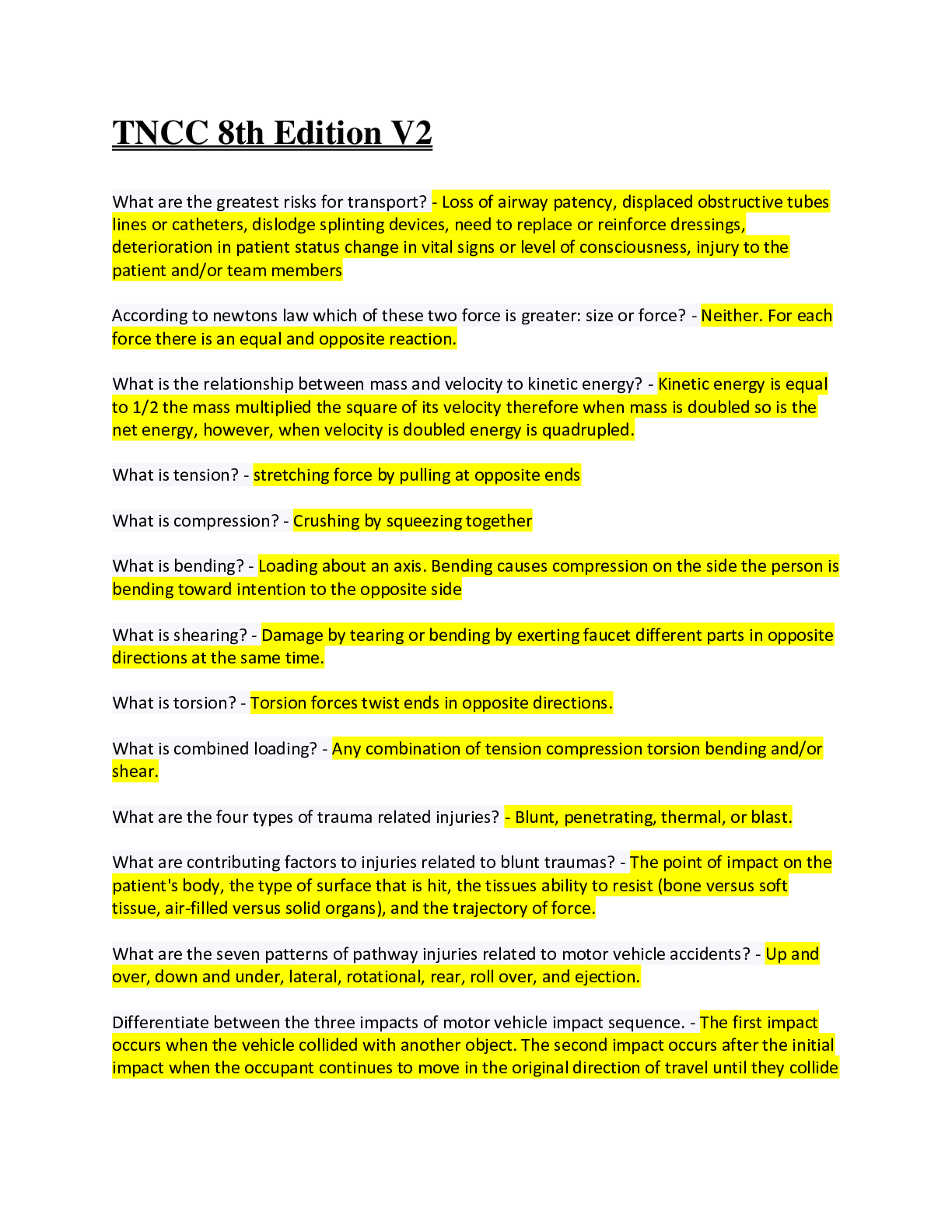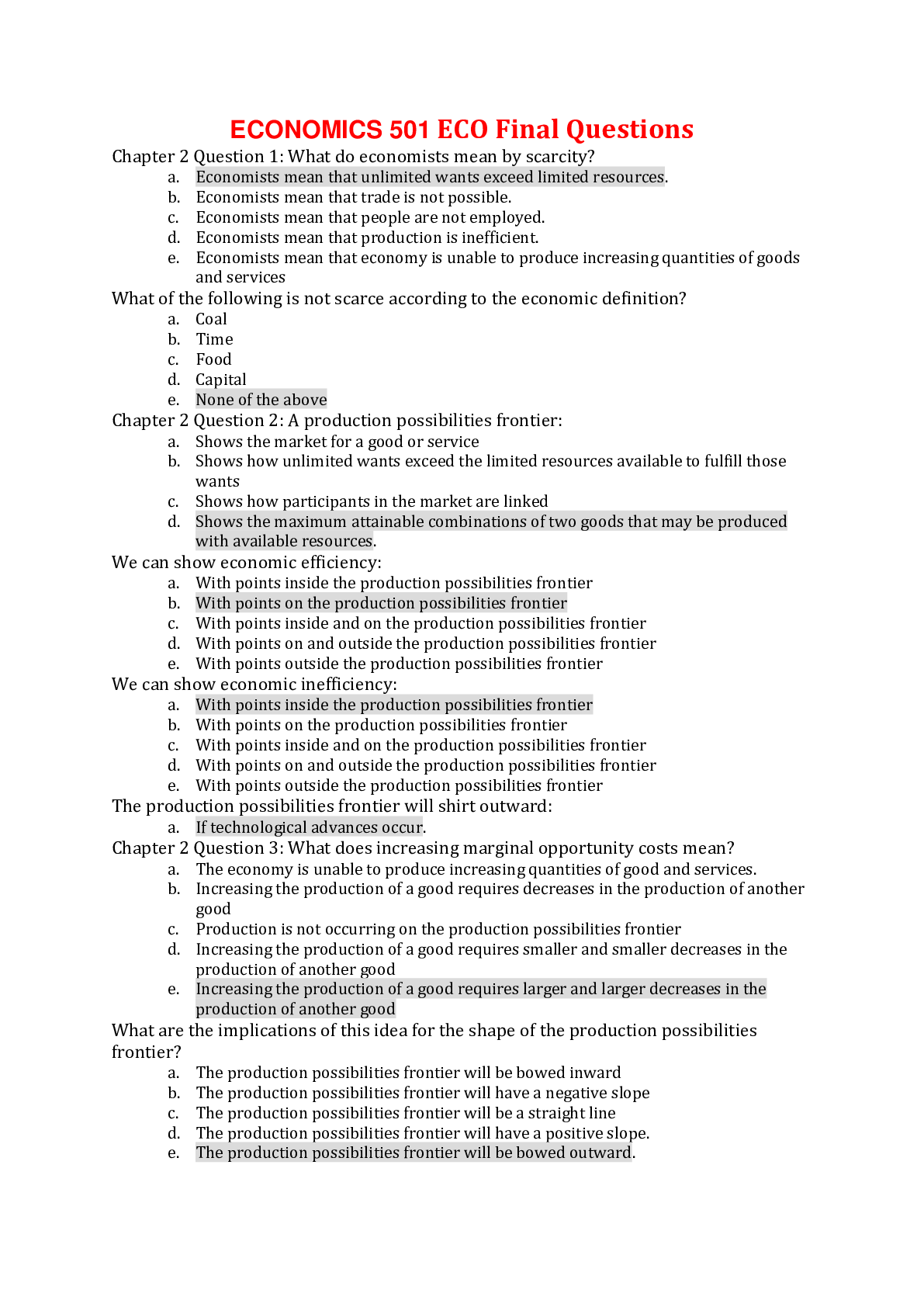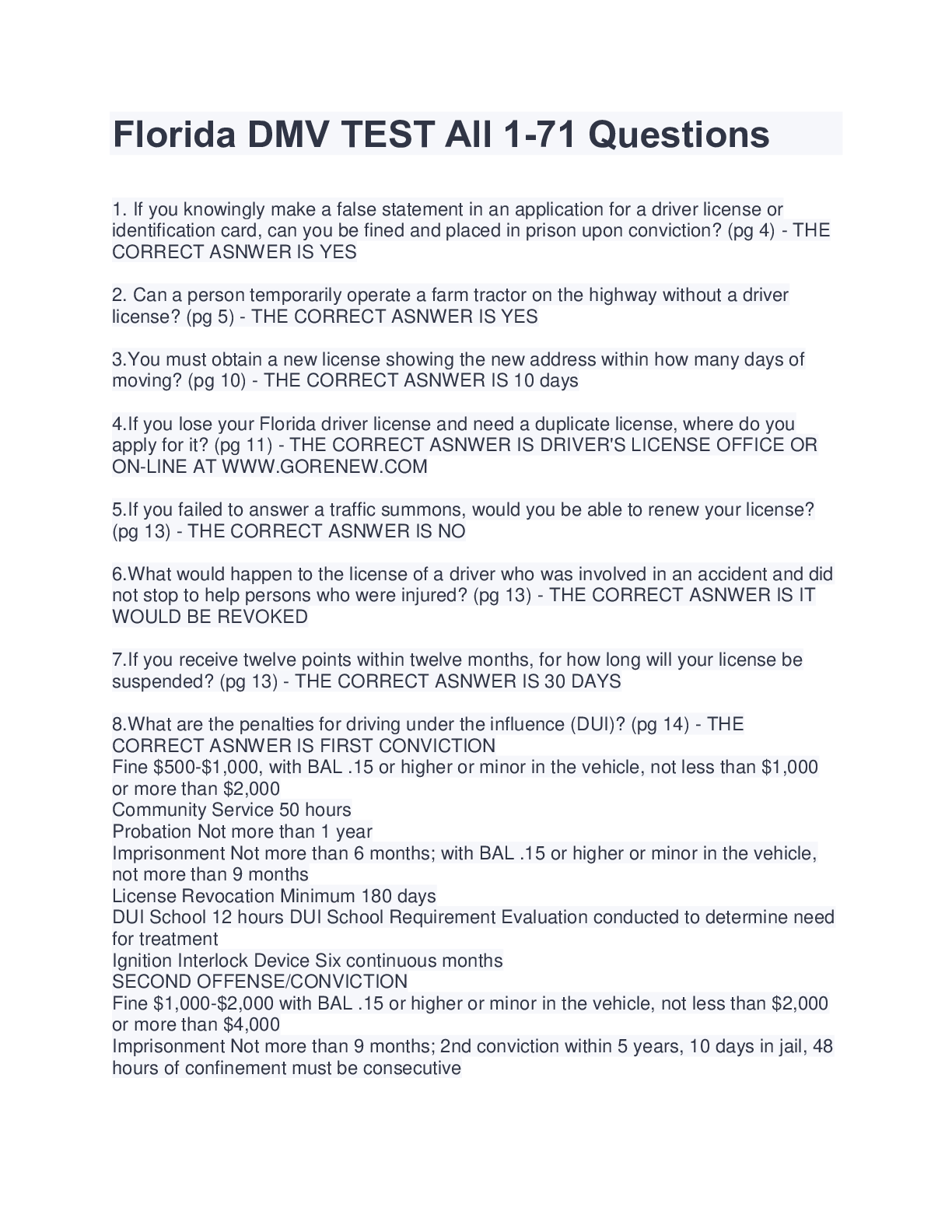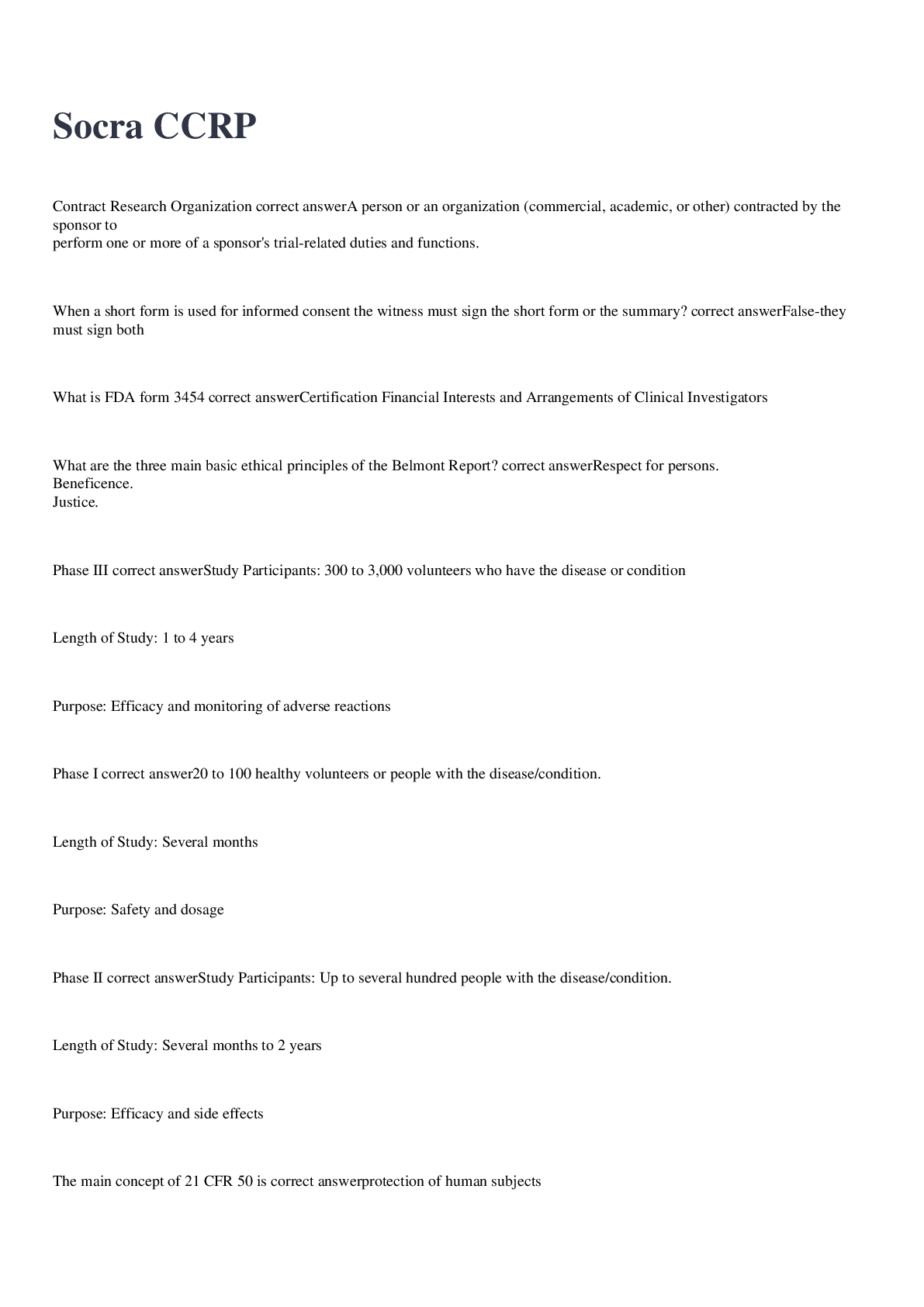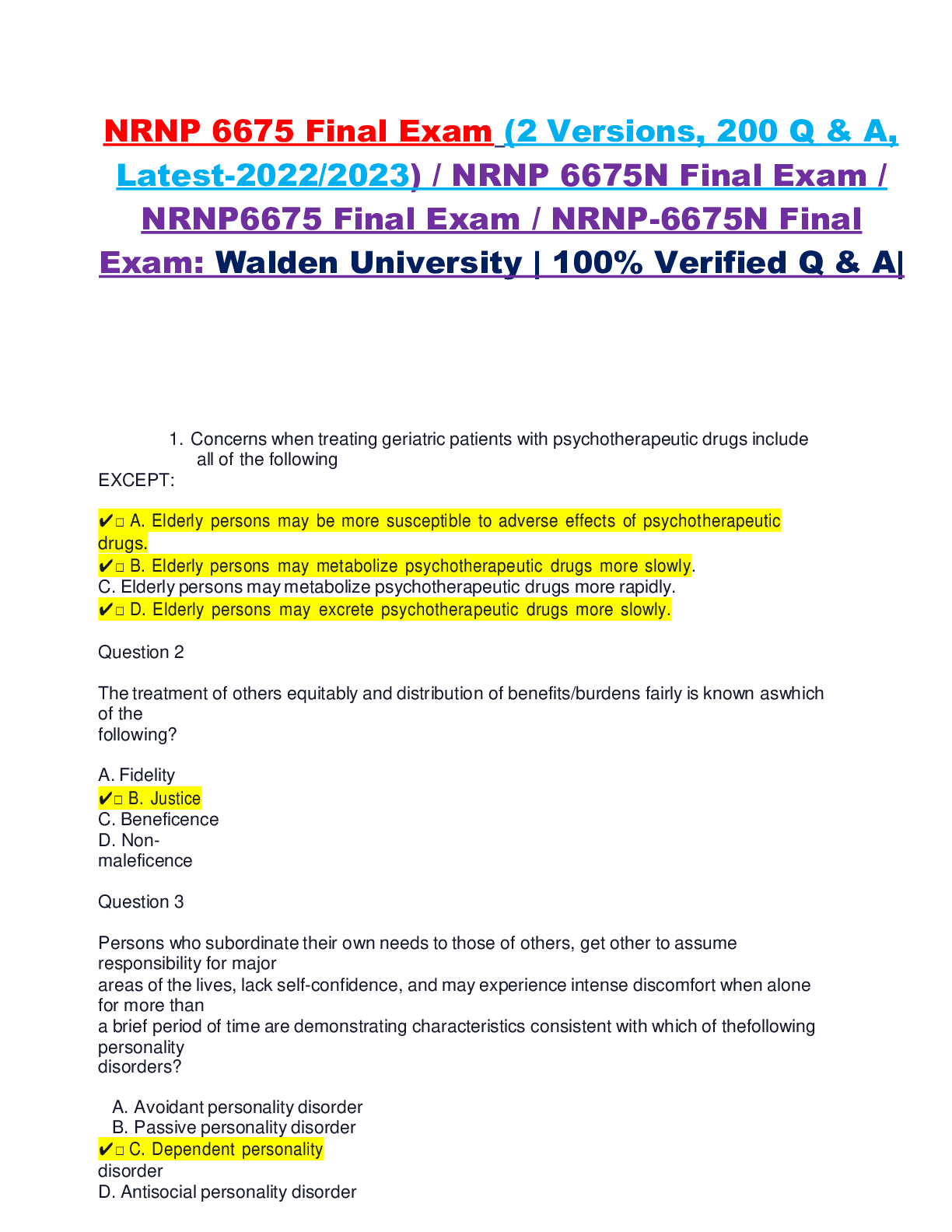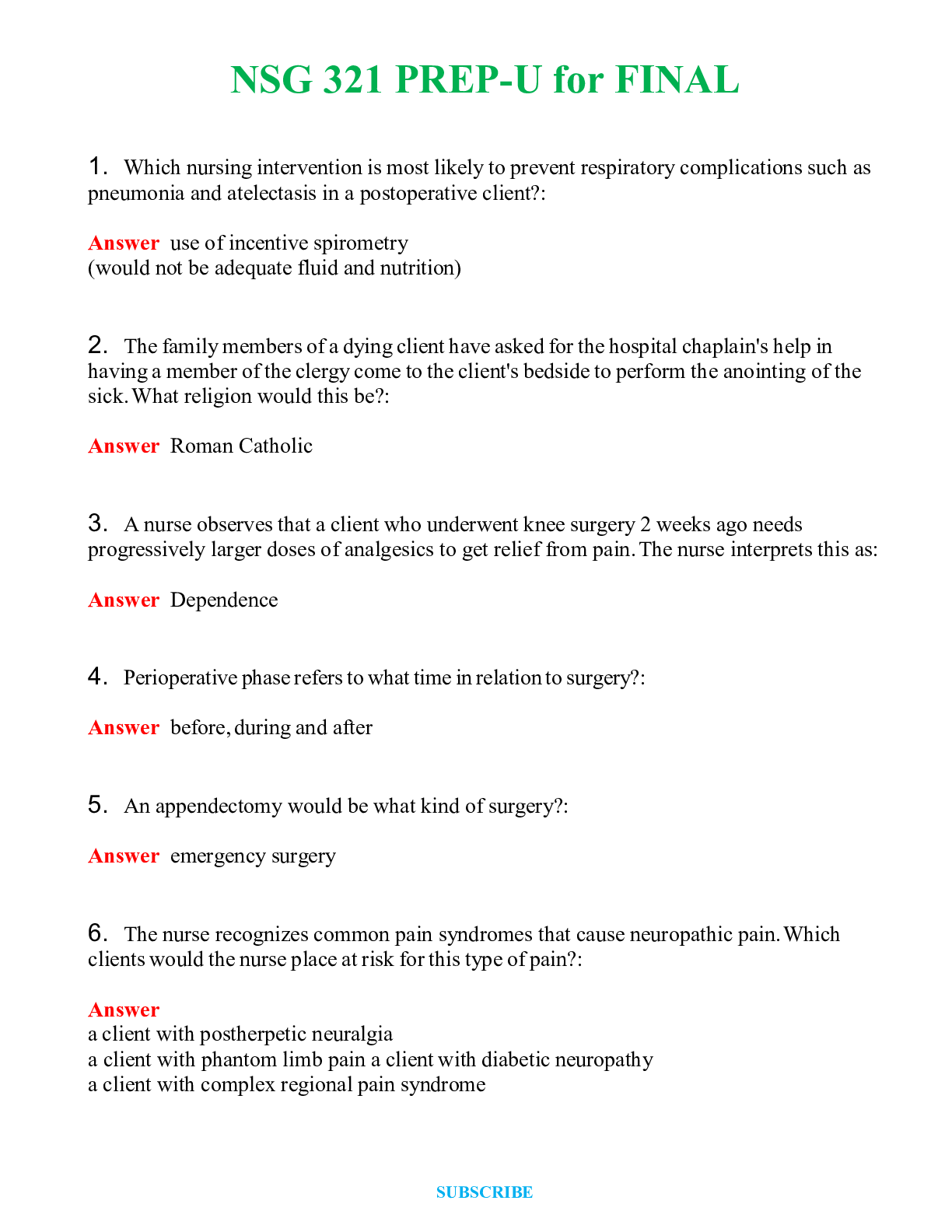*NURSING > EXAM > NURSING 6005 CHAPTER 40: DRUG ABUSE IV: MAJOR DRUGS OF ABUSE OTHER THAN ALCOHOL AND NICOTINE (All)
NURSING 6005 CHAPTER 40: DRUG ABUSE IV: MAJOR DRUGS OF ABUSE OTHER THAN ALCOHOL AND NICOTINE
Document Content and Description Below
NURSING 6005 CHAPTER 40: DRUG ABUSE IV: MAJOR DRUGS OF ABUSE OTHER THAN ALCOHOL AND NICOTINE Test Bank MULTIPLE CHOICE 1. A nurse is teaching a drug prevention class to a group of parents of a... dolescents. Which statement by a parent indicates understanding of the teaching? a. “Compared with alcohol, marijuana has little or no long-term adverse effects.” b. “Ecstasy causes reversible damage to serotonergic neurons.” c. “LSD does not cause an abstinence syndrome when it is withdrawn.” d. “Most individuals who abuse opioids began using them therapeutically.” 2. A provider orders clonidine (Catapres) for a patient withdrawing from opioids. When explaining the rationale for this drug choice, the nurse will tell this patient that clonidine (Catapres) is used to: a. prevent opioid craving. b. reduce somnolence and drowsiness. c. relieve symptoms of nausea, vomiting, and diarrhea. d. stimulate autonomic activity. 3. What is the primary reason for opioid abuse? a. Ease of access b. Initial “rush” similar to orgasm c. Peer pressure d. Prolonged sense of euphoria 4. A nurse is discussing the differences between OxyContin OC and OxyContin OP with a group of nursing students. Which statement by a student indicates understanding of the teaching? a. “OxyContin OC cannot be drawn into a syringe for injection.” b. “OxyContin OP has greater solubility in water and alcohol.” c. “OxyContin OP is not easily crushed into a powder.” d. “Patients using OxyContin OP are less likely to overdose.” 5. A patient arrives in the emergency department complaining of dizziness, lightheadedness, and a pulsating headache. Further assessment reveals a blood pressure of 82/60 mm Hg and palpitations. The patient’s friends tell the nurse that they were experimenting with “poppers.” The nurse will expect to administer which medication? a. Diazepam (Valium) b. Haloperidol (Haldol) c. Methylene blue and supplemental oxygen d. Naloxone (Narcan) 6. A patient who has a long-term addiction to opioids takes an overdose of barbiturates. The nurse preparing to care for this patient will anticipate: a. a severe abstinence syndrome when the effects of the barbiturates are reversed. b. minimal respiratory depression, because the patient has developed a tolerance to opioids. c. observing pinpoint pupil, respiratory depression, and possibly coma in this patient. d. using naloxone (Narcan) to reverse the effects of the barbiturates, because cross-tolerance is likely. [Show More]
Last updated: 1 year ago
Preview 1 out of 7 pages

Reviews( 0 )
Document information
Connected school, study & course
About the document
Uploaded On
Feb 17, 2021
Number of pages
7
Written in
Additional information
This document has been written for:
Uploaded
Feb 17, 2021
Downloads
0
Views
47




















